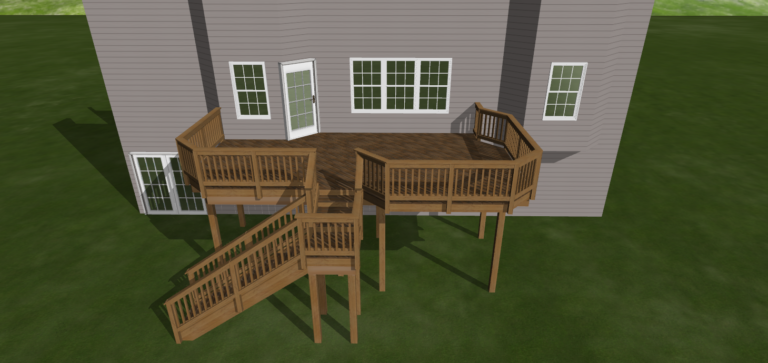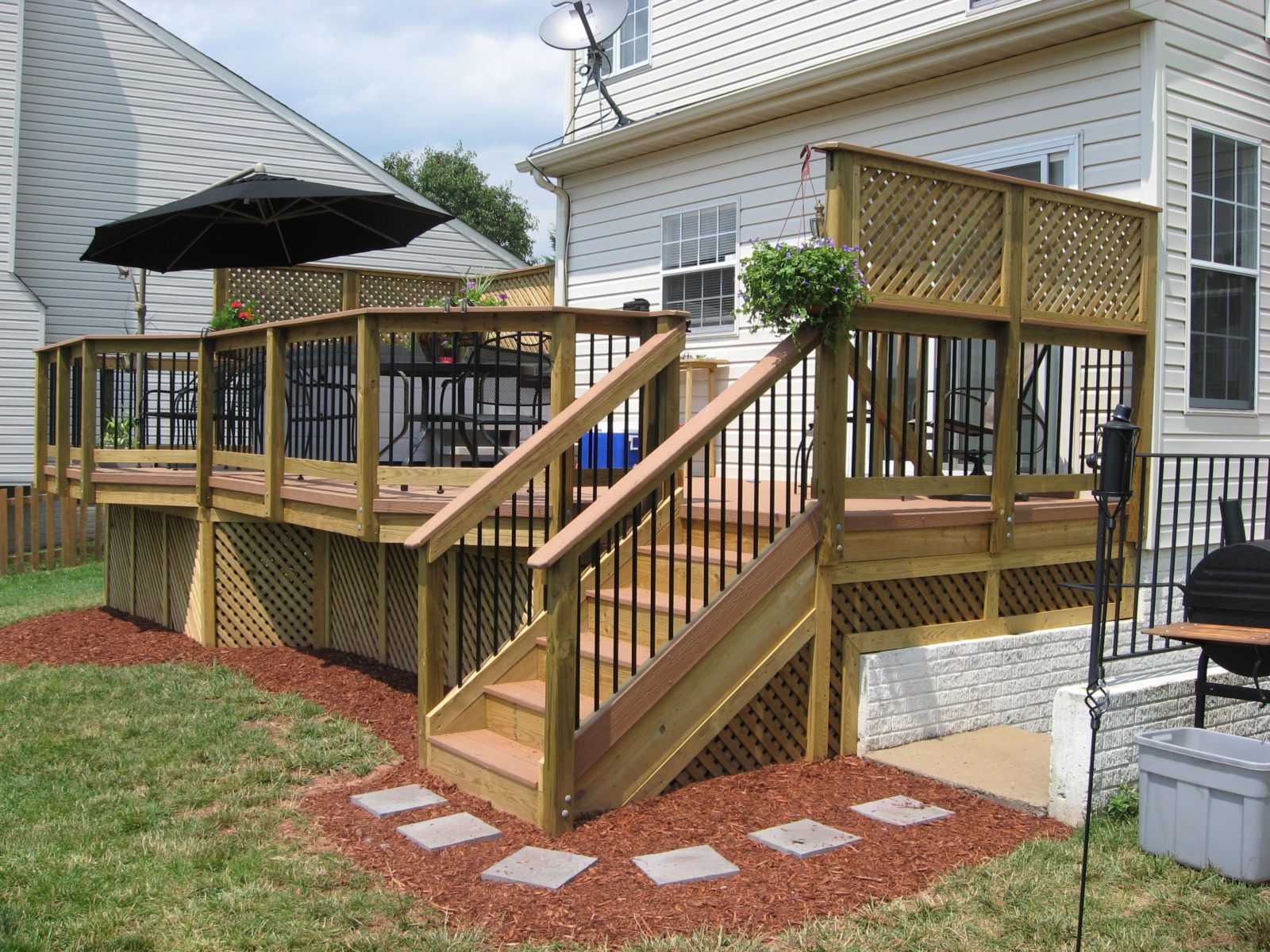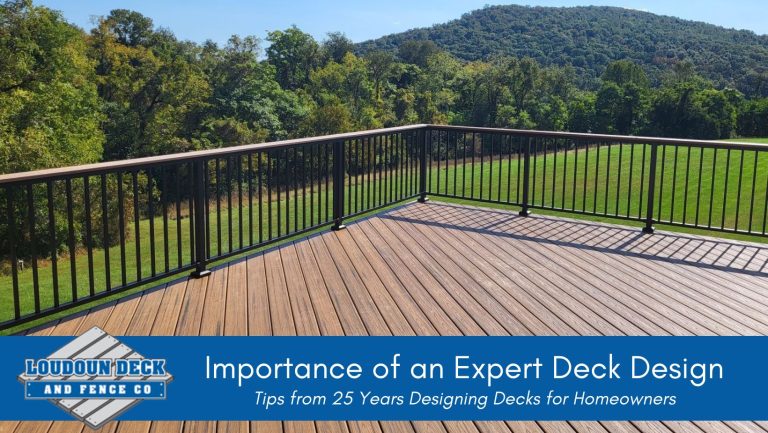If you are looking to build a deck you might be wondering what the big deal is about composite decking. You might also be wondering what IS composite decking? Composite decking uses composite material. Composite material is a combination of plastic, wood fiber, and some kind of binding agent (a chemical additive). The combination and percentage of each of these elements varies between the different brands of composite material on the market. Think of this like a recipe, each company has a different recipe that makes up their composite material but each recipe contains similar ingredients.
The Types of Composite Decking
There are two main types of composite decking, capped and uncapped. Uncapped composite is an older form of composite decking. Modern composite is typically capped. Uncapped composite decking is more susceptible to mold and other forms of deterioration because the ingredients are exposed to the elements and it is more porous. Uncapped composite decking is like a cake, all of the ingredients are mixed together evenly. Capped composite decking has a plastic coating that encases the ingredients. Think of this like an egg, the inside of the egg is completely encased by its shell. This offers a higher degree of protection against the elements and is therefore less likely to become deteriorated by the elements.
Pros and Cons of Composite Decking
When talking about the pros and cons of composite I will be assuming that the composite material we are talking about is capped composite material because that is the more typical form. Uncapped is an older material and less used.
Composite material has several advantages including lower maintenance costs, longevity of the material, cost effective, durable, moisture/insect resistant, scratch resistant, available in a wide range of colors, less likely to warp compared to its PVC/Vinyl counterpart, better slip resistance, and the most authentic looking non-wood material.
The cons of composite material include, the heavier weight, overheating due to its plastic shell, and the potential for delamination from sun exposure. In cases with prolonged water exposure mold is a possibility. One of the main complaints of composite decking is that it becomes very hot in direct sunlight. Some studies on the product have shown that it can get 10 degrees hotter than its fully wood counterpart. Composite is heavier than wood but it is also more stable. The con lies in the fact that more supports are needed for composite decking because of its weight. Delamination is another concern when it comes to composite decking.
PVC/Vinyl Material
What about other non-wood composite materials? PVC/Vinyl is one type of “composite”. PVC/Vinyl is not actually composite but when people talk about composite PVC/Vinyl is worth mentioning in the same breath. PVC/Vinyl decking is made 100% from plastic unlike a true composite material which is made of a mixture of plastic, wood and chemical additives. PVC was created with 100% plastic to help minimize cons of older uncapped composite material like mold and insect infestations.
Pros and Cons of PVC/Vinyl Decking
PVC/Vinyl has a lot of similarities to traditional composite decking material. It is also durable, cost effective, moisture/insect resistant, scratch resistant, available in a wide variety of colors, and the longevity of the product compared to full wood material is great. PVC/Vinyl also has a few positives compared to its composite material counterpart including that PVC?Vinyl is 100% mold resistant, 100% recycled and it is lighter weight. PVC/Vinyl is typically suited for areas that have an extremely high water content. This material does the best in a place that will have the deck/patio covered in water most or all of the time.
PVC/Vinyl has a few cons, one of which is warp. Because the product is 100% plastic it is more susceptible to high heat and warp than other materials. It can also be tricky to install because there are specific ways it needs to be installed to help avoid warp. The main con that comes up when comparing PVC/Vinyl to it’s composite material counterpart is that PVC/Vinyl and the cellular PVC/Vinyl are not as dural or scratch resistant. They mark up rather easily. There is also an argument to be made that PVC/Vinyl is slippery when wet and looks less like “natural wood” than its composite counterpart.
Cost: Short Term vs Long Term
Composite materials including PVC/Vinyl are typically more expensive up-front compared to traditional wood material. For the purposes of simplicity I will be including PVC/Vinyl in my definition of “composite” in this section. There are typically three different types of decks that are installed. A pressure treated wood deck, which is when the natural wood material is used for the entire deck. A hybrid deck, which is a combination of composite material and traditional wood. Typically on a hybrid deck there is composite material on the flooring and top railings (where most of the sun exposure occurs). Lastly there is a full composite deck, which is a full composite material on the entire deck with the exception of the support posts. A full composite deck is typically about 40% more expensive than a traditional wood deck with a hybrid deck being in between, about 20% more expensive than a traditional wood deck.
Cost in Terms of Maintenance
While comparing the cost of composite vs a traditional wood deck the main thing you need to consider is the cost of maintenance overtime. Typically a traditional wood deck needs to be re-stained/sealed every 1-3 years depending on sun exposure. That can add up quickly and at some point you might as well have bought a hybrid or a full composite deck and enjoyed that “more expensive deck”, maintenance free. Let’s look at an example. *the costs below are purely for examples sake*
Let’s say that you want a 10 x 10 deck. For the sake of this example let’s say that the deck in a traditional wood material costs $7,500. The hybrid costs $10,000. Let’s say that you decide to go with the traditional wood deck. Everytime you re-stain/re-seal it, it costs you $800. You have to re-stain/re-seal every 1-3 years. By the 4th time you have to re-stain/re-seal (4-10 years) it you might as well have gone with the hybrid. The hybrid has composite flooring and top railings. It won’t splitter and does not require any maintenance except maybe painting the wood railings if desired. You might as well have bought the hybrid deck and ditched the maintenance. If you had gone with a full composite deck, that deck would take much longer to make up your money on maintenance (around 10-18 years).
When it comes to cost overtime there is a clear winner of a hybrid deck over a traditional wood deck. A hybrid deck most certainly gives you the most bang for your buck overtime. You might be wondering why anyone would invest in the more expensive full composite deck? Typically people choose to invest in a full composite deck because of looks and ease of maintenance on every portion of the deck despite the longevity of the ROI on a composite deck.
Conclusion
Overall, there are advantages and disadvantages to each type of material. It all comes down to circumstance and which factors matter most to you. For instance, if you are building your dream home that you want to retire in, you might invest in a full composite deck for looks, longevity, durability and maintenance despite the high cost. But if you were in a different circumstance like trying to do some home improvements before you sell your home you might go with a wood deck because you won’t personally have to deal with the up-keep hassle or cost overtime. On another note the area that you live in might determine which material suits your needs best. If you are in an area that has a high amount of rain each year, maybe PVC/Vinyl is best for you. At the end of the day, it all comes down to which things you care about most and which benefits suit your needs best.



